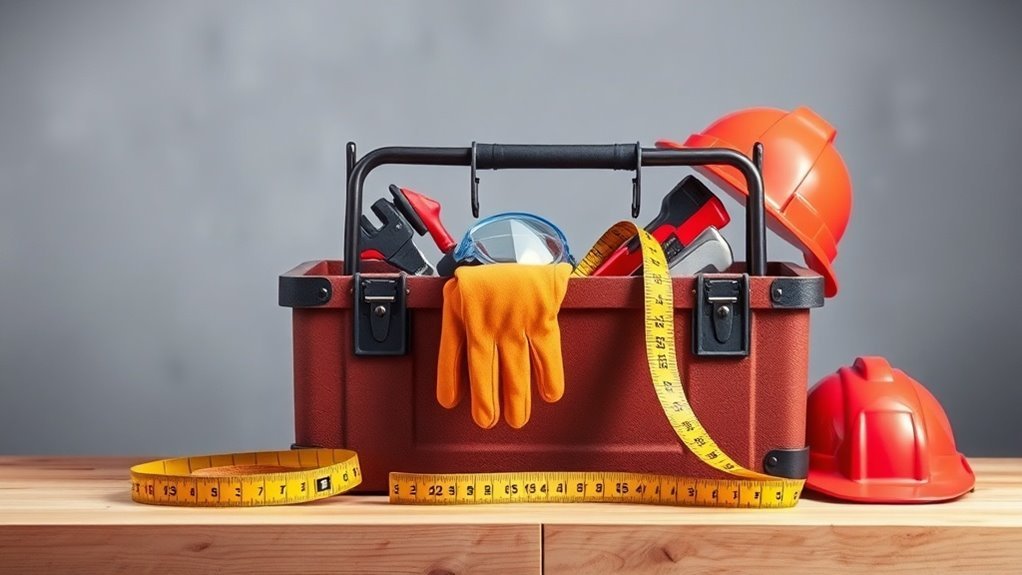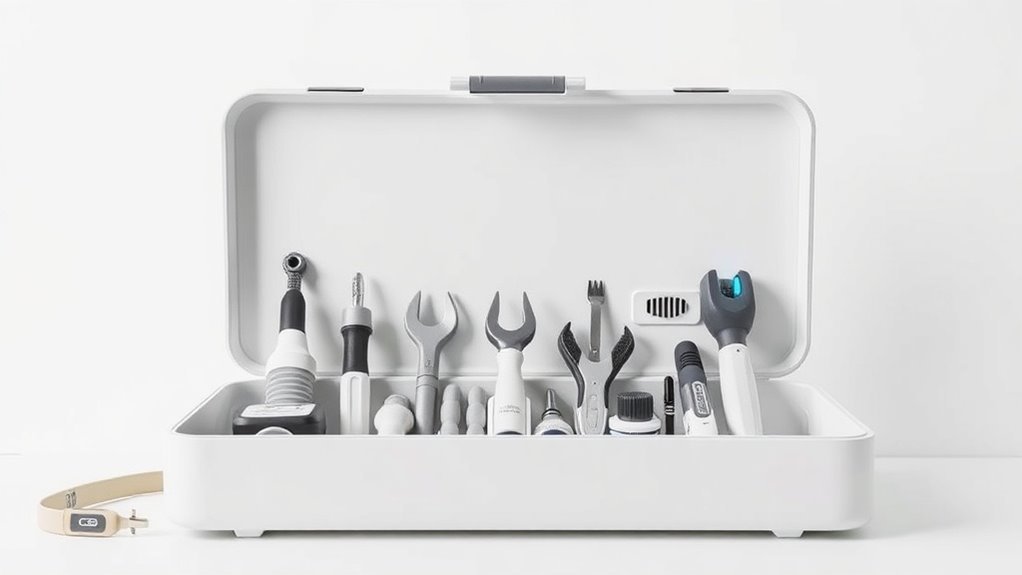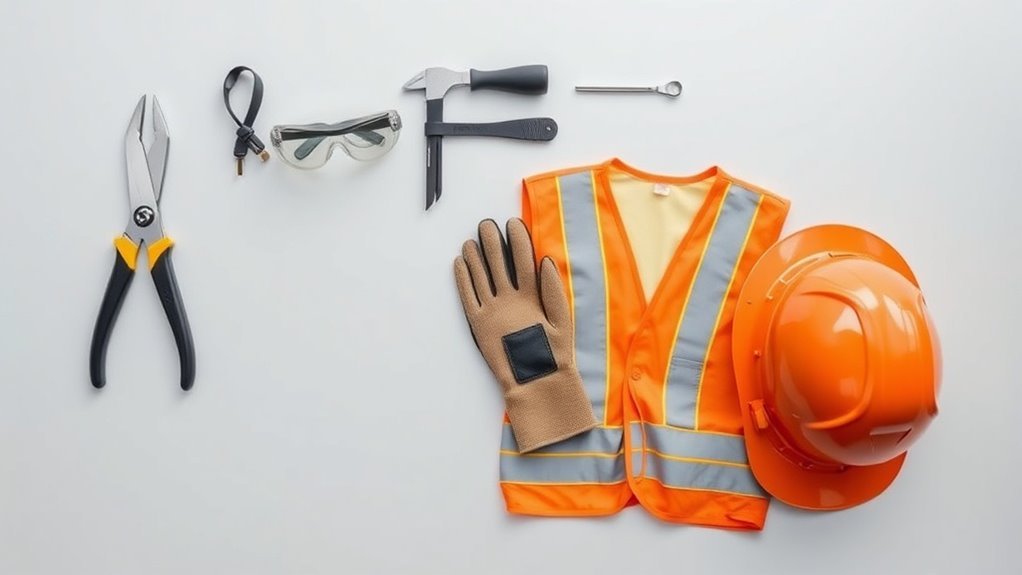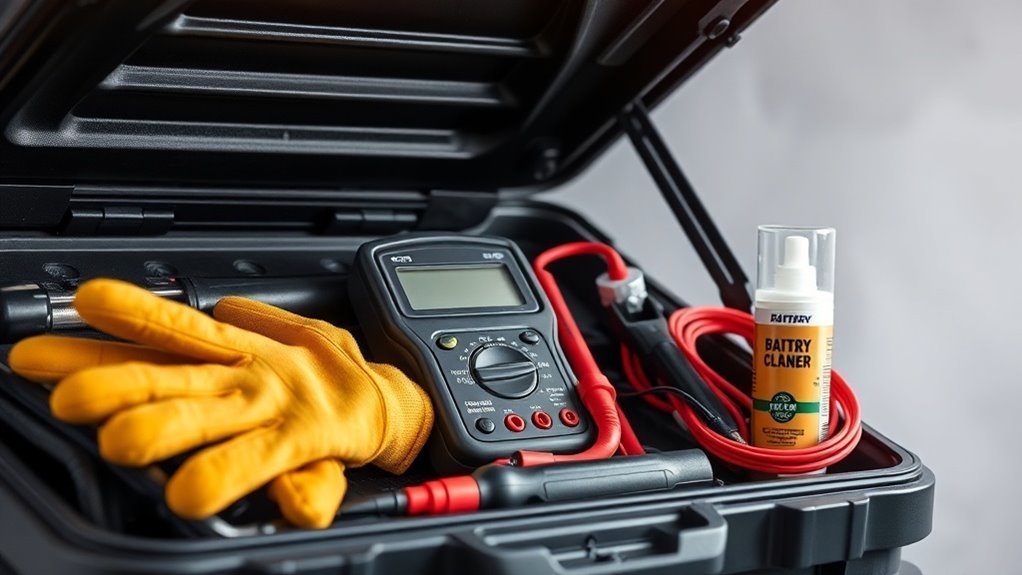The Role of Steel Toes in Protective Footwear

Steel toes play an essential role in protective footwear by safeguarding your feet from heavy impacts and sharp objects. They help prevent injuries from falling tools or materials and offer slip resistance on wet surfaces. Choosing the right pair guarantees comfort and support, especially during long work hours. With proper maintenance, your steel-toed boots can last longer and maintain their protective features. There’s so much more to discover about these crucial work shoes.
Key Takeaways
- Steel toes provide essential protection against heavy impacts from falling objects, making them crucial in hazardous work environments.
- They prevent injuries from sharp objects like nails and glass, addressing puncture hazards effectively.
- Steel-toed footwear often includes electrical hazard protection, minimizing risks associated with electrical shocks.
- Slip-resistant soles enhance traction on slippery surfaces, reducing the likelihood of slips and falls.
- Overall, steel toes support worker safety, comfort, and well-being during long hours in demanding conditions.
Understanding Steel Toe Design and Materials
When it comes to protective footwear, understanding the design and materials of steel toes is crucial for ensuring safety and comfort on the job.
Steel toes typically consist of high-quality steel designed to withstand heavy impacts, protecting your feet from falling objects and compression hazards. The design often includes a rounded shape for added comfort and to accommodate foot movement.
Additionally, modern steel-toed footwear uses lightweight alloys or composites, offering similar protective features without the added weight. Integrated features like moisture-wicking interiors and shock-absorbing soles enhance comfort during long work hours.
It’s essential to choose styles that fit well and provide adequate support, ensuring you get the maximum benefit from this important safety feature.
Benefits of Steel-Toed Footwear for Workers

Wearing steel-toed footwear can greatly enhance your safety on the job, especially in environments where heavy objects are handled. These boots provide much-needed protection against potential foot injuries, like crushing or punctures. Not only do they keep your toes safe, but they also offer added stability and support, reducing the risk of slips and falls.
| Benefit | Description |
|---|---|
| Injury Prevention | Protects toes from heavy objects. |
| Enhanced Support | Reduces fatigue during long hours of wear. |
| Slip Resistance | Offers better traction on slippery surfaces. |
Investing in steel-toed footwear isn’t just smart; it’s essential for many job roles. You’re making a commitment to your safety and well-being.
Common Hazards Addressed by Steel Toes
Steel-toed footwear protects against several common hazards that can put your feet at risk on the job. One major threat is falling objects, like heavy tools or materials, which can cause serious injury. Steel toes provide vital reinforcement, shielding your toes from impact.
Another hazard to be aware of is punctures from sharp objects, such as nails or glass. Steel toes can help you avoid painful injuries by preventing penetration.
Additionally, if you work in environments where electrical hazards are a concern, steel-toed shoes with electrical hazard protection can minimize the risk of shock.
Finally, wet or slippery surfaces pose a danger, so many steel-toed shoes come with slip-resistant soles, ensuring a safer footing while you work.
Choosing the Right Steel-Toed Footwear
How do you know which steel-toed footwear is right for you?
Start by considering your work environment and the specific hazards you face daily. If you’re on a construction site, look for boots with slip-resistant soles and waterproof features.
Consider your work environment and daily hazards; choose steel-toed boots with slip-resistant soles and waterproof features for optimal safety.
Next, ascertain the right fit. You don’t want them too tight or too loose, as comfort is key for long hours on your feet. Pay attention to breathability, especially in hot conditions.
Additionally, explore the weight of the boots; lighter options can help reduce fatigue.
Finally, think about style and functionality—choose a design that matches your work and personal preferences. Remember, investing in safety gear contributes not only to your protection but also enhances overall efficiency on site.
Maintenance and Care for Steel-Toed Boots
Maintaining your steel-toed boots is essential for ensuring their longevity and your safety on the job.
Proper care not only keeps them looking good but also maintains their protective features.
Here are four key maintenance tips:
- Clean Regularly: Wipe off dirt and grime after each use to prevent deterioration.
- Dry Properly: If they get wet, let them air dry, avoiding heat sources that can warp the materials.
- Inspect Often: Check for signs of wear, such as cracks or loose components, to address issues before they worsen.
- Condition Leather: For leather boots, use a suitable conditioner to keep the material supple and water-resistant.
Questions
Can Steel-Toed Boots Be Worn in Cold Weather?
Yes, steel-toed boots can be worn in cold weather. Just make sure they’re insulated and water-resistant. You’ll keep your feet warm and protected, which is essential for staying comfortable during outdoor tasks in chilly conditions.
Are There Alternatives to Steel Toes?
You’ve got options like composite toes, aluminum toes, and carbon fiber, each a feather in your cap of safety. They’re lightweight and just as protective, perfect for keeping your feet happy without the steel.
How Do Steel Toes Affect Shoe Weight?
Steel toes can add extra weight to shoes, making them feel bulkier. Depending on the design, this weight might affect your comfort and mobility, so it’s important to take into account what feels best for your needs.
Do Steel-Toed Boots Have Electrical Hazard Protection?
Yes, steel-toed boots can offer electrical hazard protection, acting like a guardian against unexpected shocks. Just remember, not all boots have this feature, so always check the labeling before stepping into the danger zone.
What Is the Lifespan of Steel-Toed Footwear?
Steel-toed footwear typically lasts between 1 to 5 years, depending on usage and maintenance. If you regularly inspect and care for them, you can extend their lifespan considerably, ensuring ideal protection and comfort.
Conclusion
In summary, investing in steel-toed footwear is essential for your safety on the job. As the saying goes, “an ounce of prevention is worth a pound of cure.” By choosing the right boots, you protect yourself from potential hazards and enhance your overall comfort at work. Don’t underestimate the importance of proper maintenance, either; caring for your boots will prolong their life and effectiveness. Stay safe and keep your feet well-protected—it’s a step in the right direction!






